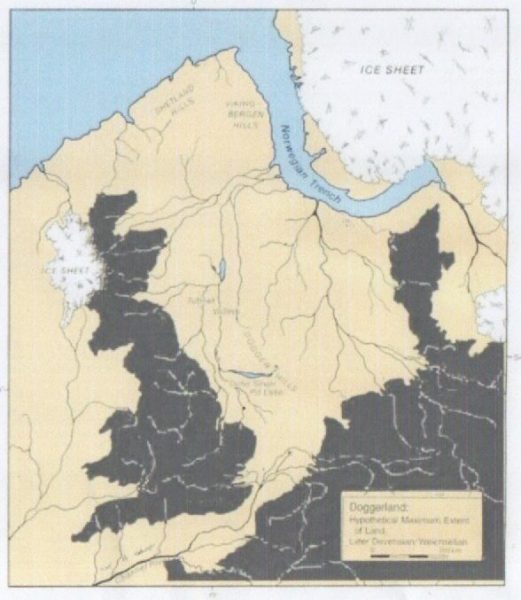
The map above, again copied from the Doggerland Facebook page, shows the possible furthest extent of the area above sea level during the retreat of the last Ice Age. The river flowing out from the Humber inlet is shown as being a tributary of the river system flowing north to the ‘Norwegian Trench’ (now the south Baltic Sea). However, as the sea level rose it is known that the exit river flowed south to link with the Thames and Rhine outlets which then flowed west through the now English Channel.
Obviously, the reality for the area shown above would have varied according to the distance from the surviving icesheets so that in south Doggerland the climate and topsoil could support incoming cold-tolerant plants and animals, this not so further north where permafrost would still have held the topsoil in its grip. Of course such permafrost exists today north, for example, of the evergreen forests of Siberia, climate change will impact on these just as post-glacial warming did in Doggerland 18,000 years ago.
With Doggerland being a very large area archaeological discoveries along the coast of Denmark, north Germany and the Low Countries are as relevant as those of the coast of Eastern England and Scotland. Such finds relate to the Neanderthal culture or early Sapiens and their interaction. One such recent discovery has revealed that the earliest strain of homo sapiens may well go back up to 300,000 years past, this much further back in time than previously thought. In turn, this means that social interaction between Neanderthal hominids and Homo Sapiens hominids could have happened over a much longer time span than previously thought.